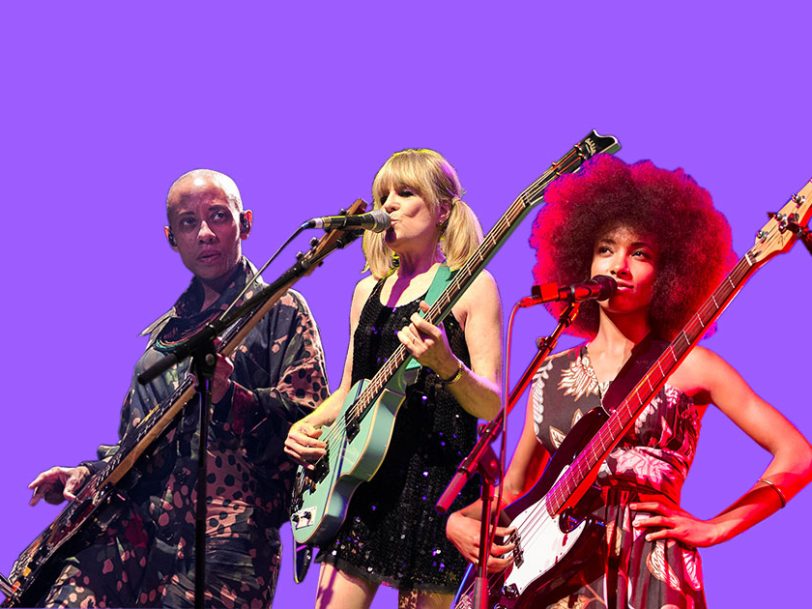“I still don’t know what it was about the bass,” the rapper and bassist Divinity Roxx said in 2021. “It was the first string instrument I picked up and I was just mesmerised by it. I still am. The depth of the tones, the way it feels in my hands. It captivates me and that’s hard to do cuz I’m usually all over the place in my mind. The bass focuses me.” These ideas of focus, anchoring, grounding and a sense of a stake to hold on to in a swirling melee occur again and again when the best female bassists talk about their chosen instrument.
Female bass players are frequently found in bands with otherwise all-male line-ups (unlike female guitarists and female drummers, who are more often part of all- or majority-women bands), and many will speak of a “part of the gang” feeling when asked about their gender in interviews. “I’ve never done gender,” Suzi Quatro said in 2022. “I never called myself a female musician. I just thought of myself as a musician. That’s why I could look at Elvis and say, ‘I’m gonna do that.’”
“Bass means so many things to so many people,” Rhonda Smith reflected in 2021. “It can be structure, it can be math, it can be a saviour for a lot of us that keeps us out of trouble and keeps us in places where we can be creative.” Ever since the instrument was invented in the 1930s, bass guitarists have brought spine, joy, strut and inventiveness to multiple genres. Enjoy their world with this list of the best female bassists of all time.
Listen to our Rock Classics playlist here, and check out our best female bassists, below.
20: Naomi Yang (1964- present)
“I picked up the bass without knowing how to play it, and took a few lessons where the teacher was showing me how to play the bass ‘properly’, but that just seemed totally boring,” Naomi Yang, bassist of Galaxie 500 and Damon And Naomi, said in 2010. “I had all these melodies going around my head and I just decided to play bass that way.” Yang’s work on the bass is crucial to her bands. As pioneers of dreampop and slowcore – two genres that tend towards the ethereal and abstract – Galaxie 500 in particular benefited from Yang’s work. Her bass, grounding the melancholic, uncertain sound, was so important that her bandmate, drummer Damon Krukowski, purposefully kept Yang’s instrument overwhelmingly loud in his monitor whenever they played live.
Must hear: Tugboat




